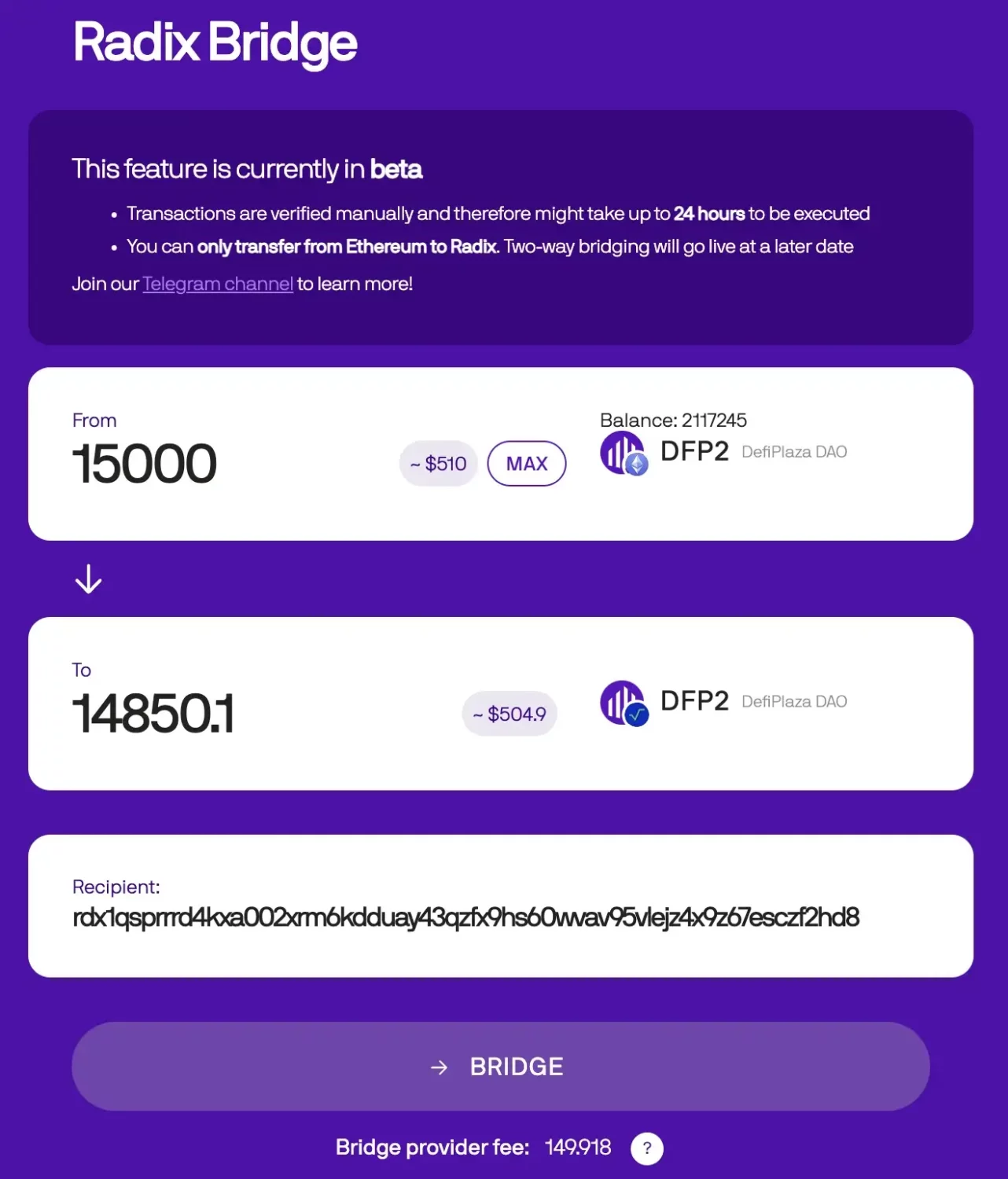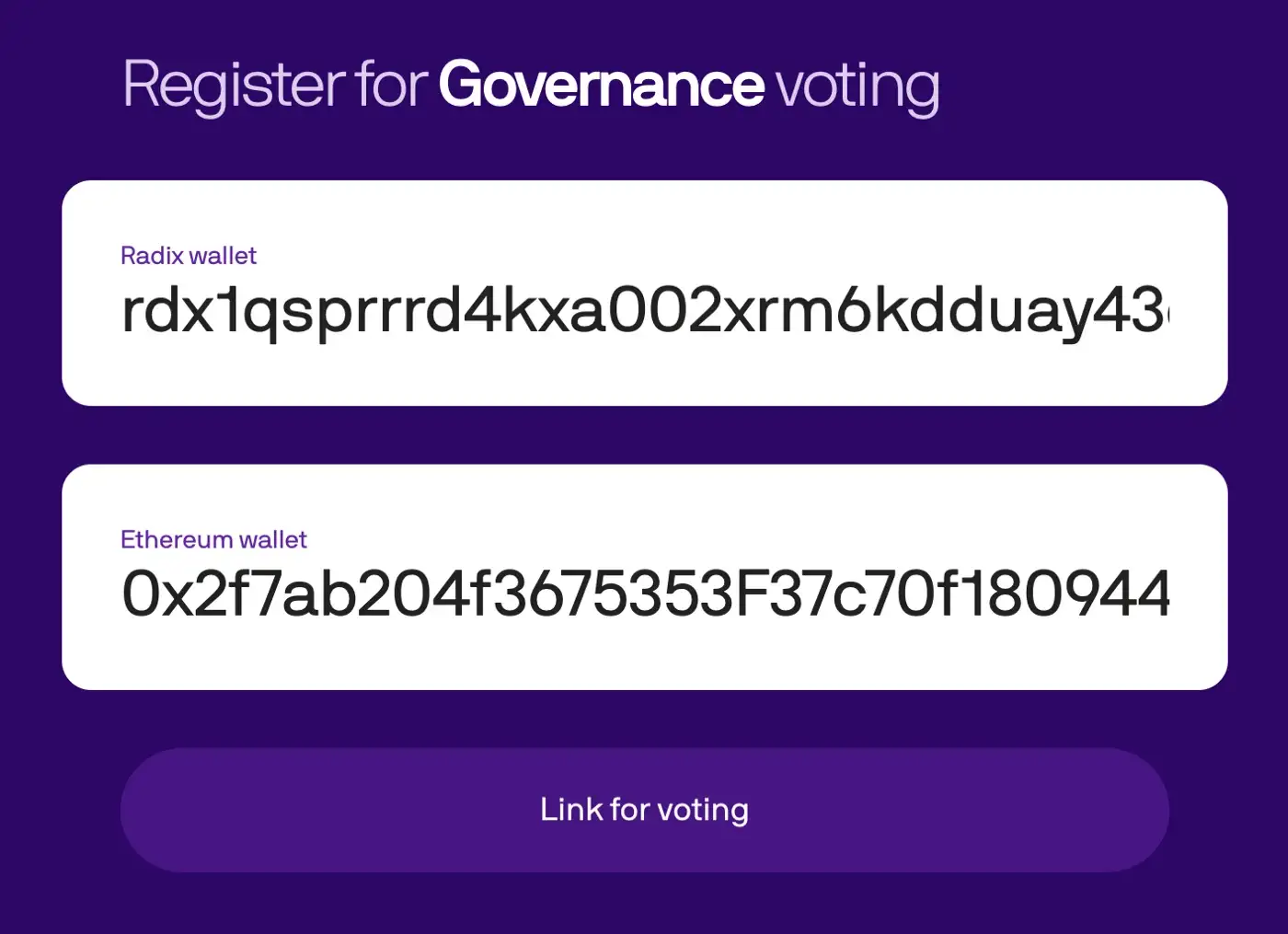DefiPlaza is an Ethereum Decentralized Exchange that launched in 2021 to make DeFi affordable again. Since then, we’ve proven our technology and demonstrated consistently to be able to provide the lowest gas cost transactions on our two exchanges: DefiPlaza & StablePlaza. DefiPlaze is a multi-token exchange for 16 of the most-traded tokens on Ethereum and StablePlaza with a special form of concentrated liquidity specifically designed for stable tokens.
As Jazzer (our founder) is a long-term Radix community member, the DefiPlaza community contains many Radix fans. With the completion of our staking program in October 2022 and the rapidly maturing Radix ecosystem, we found the time is right to introduce our DFP2 governance token on the Radix platform.
The DFP2 Token Bridge
The DFP2 token was largely distributed to the community through rewards for providing liquidity on the DefiPlaza exchange. That reward program has finished, which means that all 67,941,915 tokens that will ever exist are now in circulation (minus 251,412 tokens that were burnt by the team in several burn events). The circulating tokens represent voting and staking rights on DefiPlaza community governance proposals.
The concept of the Ethereum → Radix bridge is that the community can move their tokens to Radix if they want to. This process doesn’t increase the circulating supply, as for every token released on Radix, one token is locked on Ethereum.

Moving tokens from Ethereum to Radix is as easy as going to the bridge website, stating how many tokens you want to bridge and what Radix address. Then you’ll need to approve the bridge contract and execute the transaction on the Ethereum network.
Once the transaction is completed, you’ll see the DFP2 tokens appear in your wallet on the Radix network within 24 hours (due to a manual check). The reverse path, moving DFP2 from Radix to Ethereum, is already technically possible but not yet integrated into the UI. This part will be implemented shortly to allow arbitrage both ways and ensure the Radix and Ethereum tokens truly reflect the same asset.
Voting with DFP2 on Radix
The DFP2 token is the governance token for the DefiPlaza project and, as such, holds voting power. On the Ethereum network, gasless voting is implemented through the snapshot.org service. DefiPlaza now has to count voting power on the Radix and the Ethereum networks with the bridge live.
Presently, the Snapshot service doesn’t support the Radix network. Radix tokens can be counted, even though the network isn’t supported yet, by linking a Radix wallet to an Ethereum wallet which is then granted voting power equal to the number of tokens the Radix wallet holds at the time a governance vote is created.

Linking a Radix wallet to an Ethereum wallet can be done through the UI on the DefiPlaza website. The website connects with the Z3us wallet, which is used to prove ownership of the Radix wallet.
Trading DFP2 on Radix
It is our vision that DFP2 should be widely available to users and traded freely in as many places as possible. That’s why we’re working with the teams at DogeCubeX, OciSwap, and CaviarSwap to have trading pools available for DFP2 almost immediately after the launch of the bridge.
These services offer centralized automated market makers and will become DEXes on Radix through the deployment of smart contracts when Radix Babylon is released to support smart contracts.

We believe there is plenty of space for multiple DEXes on Radix, especially if they aren’t mere clones of one another and offer different functionalities. The DefiPlaza team looks forward to the release of Babylon and aims to deploy a distinguishing DEX on Radix.
How the Bridge Works
There are three parts to the bridge implementation: the Ethereum smart contract, the Radix wallet, and the bridge UI. Users can call the bridge function on the smart contract via the UI on the website. When a bridge transaction is executed, the bridge contract pulls in the correct amount of DFP2 tokens and emits an event that is monitored by the team.
Software was written that picks up on these events and automatically creates transactions that send the corresponding amount of Radix DFP2 tokens to the requested Radix address. There is a manual verification step for safety.
The entire supply of DFP2 has already been emitted, and no more can be minted in the future. The total supply is 67,941,915 tokens. The same amount of DFP2 tokens were minted as a fixed supply token on Radix, held by the bridge wallet. Whenever someone bridges (i.e., locks) tokens on Ethereum, the corresponding amount of tokens is released from the bridge wallet on Radix.
Note that the bridge contract and the Radix wallet are managed by the DefiPlaza team, i.e., the bridge implementation is currently not trustless as this isn’t technically possible yet without smart contracts on the Radix public network.